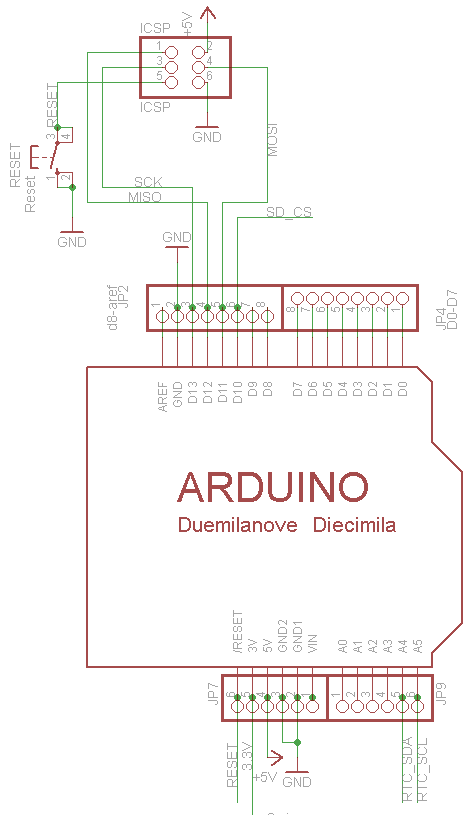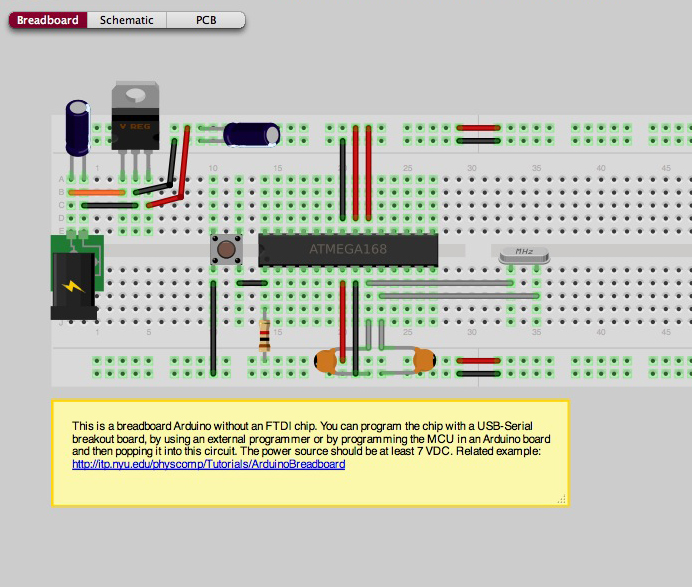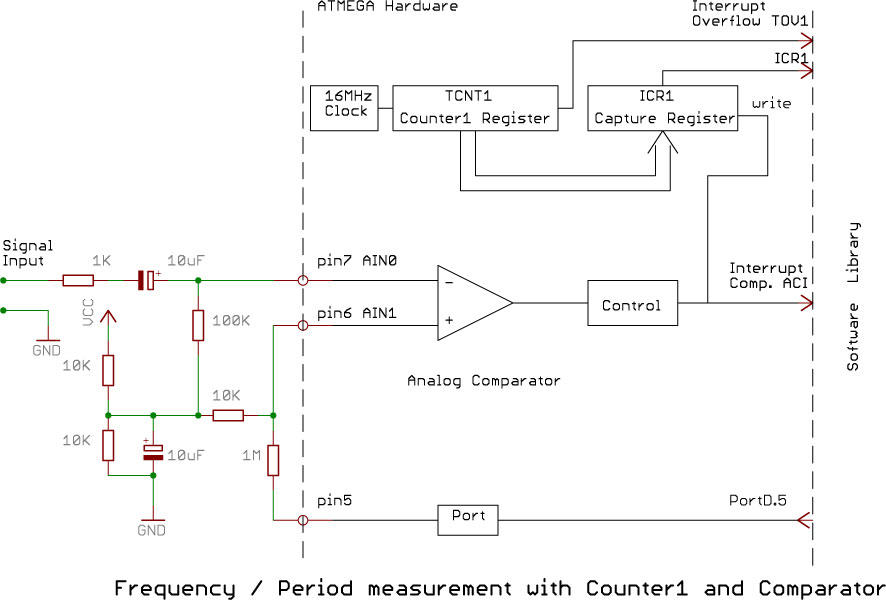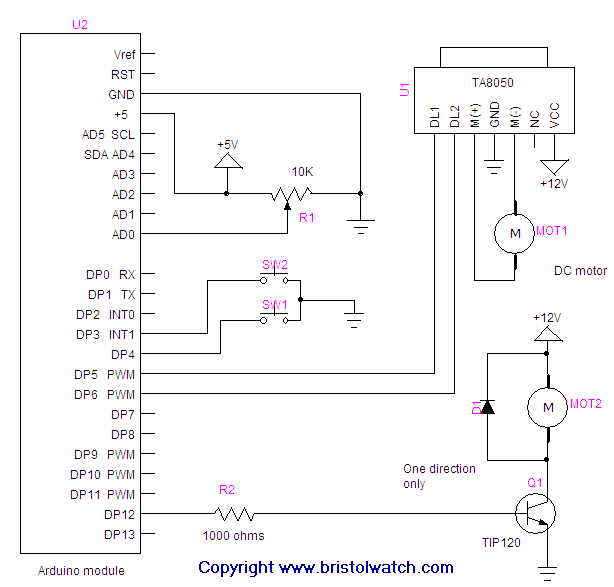
art364 / Standalone Arduino

To power the device, a clean and stable source of 5 volts DC is required. This can be achieved by using a switching 5V DC power supply from a supplier such as JK Electronics, ordering one from Jameco, or by assembling a voltage regulator circuit. A useful reference for this is found on page 254 of "Physical Computing," which includes a schematic of a 7805 voltage regulator along with a couple of decoupling capacitors. Additionally, a suitable enclosure for the components is necessary. Various materials can be utilized, including plastic, wood, or any other preferred medium. The simplest option is to employ a spare breadboard, while a more permanent solution involves soldering the components onto a copper-clad perf board, which can be sourced from Radio Shack. These perf boards feature holes drilled into a phenolic substrate, with copper rings or pads on one side for easy soldering.
To implement the 5V power supply, the 7805 voltage regulator is a popular choice due to its reliability and ease of use. The input voltage must be higher than 5V, typically in the range of 7V to 12V, to ensure proper regulation. The regulator requires two decoupling capacitors—one on the input side (typically 0.33µF) and one on the output side (typically 0.1µF)—to filter out any noise and stabilize the voltage output.
For the assembly, a breadboard allows for easy prototyping and modification of the circuit, enabling quick adjustments and testing. However, for a more robust and permanent setup, the copper-clad perf board is recommended. This board facilitates soldering of components directly onto the copper pads, which provide a solid electrical connection. The layout should be carefully planned to minimize the length of connections and reduce potential interference.
When selecting an enclosure, the choice of material should consider factors such as durability, insulation, and ease of access for future modifications. Proper ventilation may also be necessary if the circuit generates heat during operation. Overall, attention to detail in both the power supply design and the assembly of components within the enclosure will contribute to the overall performance and reliability of the electronic device.To power it up you need a clean stable source of 5 volts DC. This means that you either pick up a switching 5v DC power supply from our favorite JK Electronics, mail order one from Jameco or you will have to wire up a voltage regulator. Page 254 of Phys Comp has a nice layout of a 7805 voltage regulator with a couple decoupling capacitors.
Finally you will need something to stick all these parts into. Feel free to use anything you want: plastic, wood, a herring. The easiest method is to just use a spare breadboard but the second easiest method is to permantly solder everything together using a copper clad perf board available at Radio Shack. These have holes drilled in a phenolic substrate with little copper rings, or pads, on one side. 🔗 External reference
To implement the 5V power supply, the 7805 voltage regulator is a popular choice due to its reliability and ease of use. The input voltage must be higher than 5V, typically in the range of 7V to 12V, to ensure proper regulation. The regulator requires two decoupling capacitors—one on the input side (typically 0.33µF) and one on the output side (typically 0.1µF)—to filter out any noise and stabilize the voltage output.
For the assembly, a breadboard allows for easy prototyping and modification of the circuit, enabling quick adjustments and testing. However, for a more robust and permanent setup, the copper-clad perf board is recommended. This board facilitates soldering of components directly onto the copper pads, which provide a solid electrical connection. The layout should be carefully planned to minimize the length of connections and reduce potential interference.
When selecting an enclosure, the choice of material should consider factors such as durability, insulation, and ease of access for future modifications. Proper ventilation may also be necessary if the circuit generates heat during operation. Overall, attention to detail in both the power supply design and the assembly of components within the enclosure will contribute to the overall performance and reliability of the electronic device.To power it up you need a clean stable source of 5 volts DC. This means that you either pick up a switching 5v DC power supply from our favorite JK Electronics, mail order one from Jameco or you will have to wire up a voltage regulator. Page 254 of Phys Comp has a nice layout of a 7805 voltage regulator with a couple decoupling capacitors.
Finally you will need something to stick all these parts into. Feel free to use anything you want: plastic, wood, a herring. The easiest method is to just use a spare breadboard but the second easiest method is to permantly solder everything together using a copper clad perf board available at Radio Shack. These have holes drilled in a phenolic substrate with little copper rings, or pads, on one side. 🔗 External reference





